Welcome to our article on Riccia Fluitans, the fascinating aquatic plant commonly known as floating moss. As nature enthusiasts and aquarium lovers, we are always captivated by the wonders of freshwater plants, and Riccia Fluitans is undoubtedly one of the most intriguing specimens out there.
Its unique characteristics and ability to float effortlessly on the water’s surface make it a remarkable addition to any aquatic habitat.
In this article, we will delve into the captivating world of Riccia Fluitans, exploring its origins, distinct characteristics, scientific research, medicinal potential, care requirements, and much more.
Join us as we unveil the secrets behind this extraordinary floating moss and discover its endless possibilities for aquarium enthusiasts, environmental enthusiasts, and researchers alike.
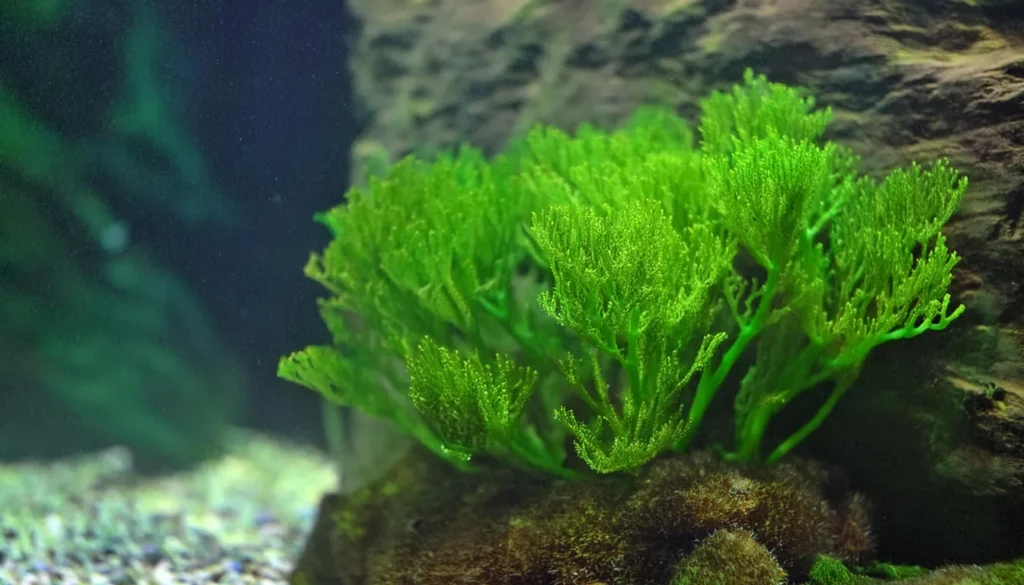
Key Takeaway
- Riccia Fluitans, also known as floating moss, is an aquatic plant that exhibits unique characteristics.
- It has a rich history and is believed to have evolved over time to thrive in various aquatic habitats.
- Scientific research has uncovered the medicinal potential of Riccia Fluitans, leading to further studies and potential applications.
- Proper care, including lighting, water parameters, and nutrient requirements, is essential for the successful cultivation of Riccia Fluitans.
- The plant’s ability to act as a bioindicator species presents exciting prospects for environmental monitoring and habitat restoration efforts.
Quick Stats
| Attribute | Details |
| Family Name | Ricciaceae |
| Origin | Cosmopolitan, found worldwide in temperate regions |
| Height | 1-2 cm (0.4-0.8 inches) when floating; can be taller when attached to surfaces |
| pH Range | 6.0 – 7.5 |
| CO2 Requirement | Low to Moderate |
| Growth Rate | Fast |
| Care Level | Easy to Moderate |
| Color Form | Bright Green |
| Water Conditions | 15-28°C (59-82°F), adaptable to a wide range of water hardness |
| Max Size | Floating mats can spread indefinitely; attached portions typically remain compact |
| Lighting | Low to High |
| Supplements | Benefits from CO2 supplementation and nutrient-rich water; trace elements enhance growth |
| Placement | Floating or attached to surfaces such as driftwood or rocks |
| Propagation | Break off portions of the mat and attach them to desired surfaces |
What Is Riccia Fluitans?
Riccia Fluitans is a fascinating aquatic plant that is commonly known as floating moss. It is often found in freshwater habitats such as ponds, lakes, and slow-moving rivers. This unique plant has the ability to float freely on the surface of the water, creating a beautiful green carpet that adds a touch of natural beauty to any water environment.
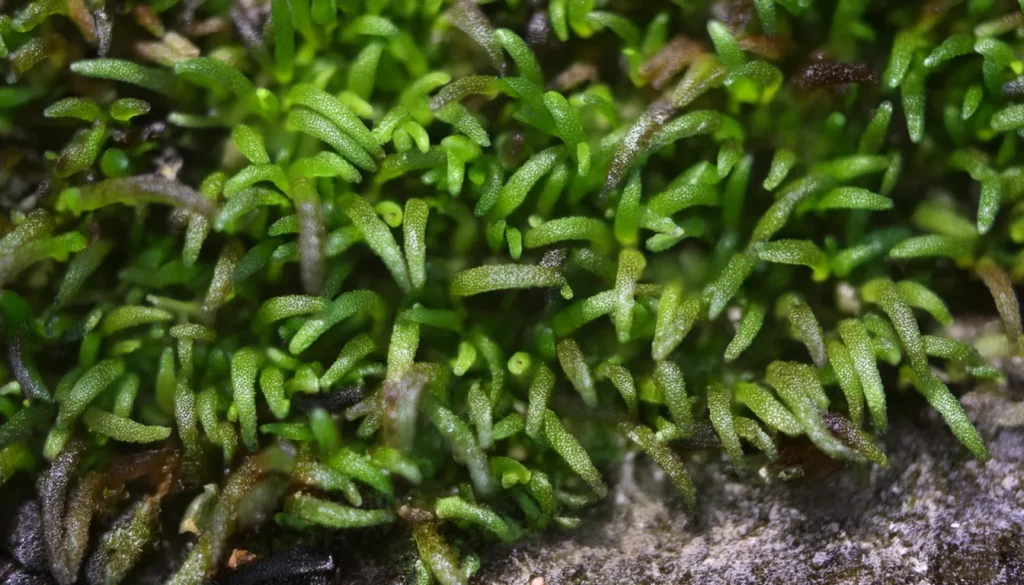
History And Origin
The history and origin of Riccia Fluitans provide fascinating insights into the evolution of this remarkable aquatic plant. Belonging to the Liverwort family, Riccia Fluitans has a rich history dating back millions of years.
It is believed to have originated in Asia and Africa, where it may have thrived in tropical and subtropical regions with abundant water sources.
Over time, Riccia Fluitans has spread to various parts of the world, including Europe and the Americas, where it has adapted and flourished in different aquatic habitats.
This widespread distribution is attributed to several factors, such as its ability to produce spores that are easily dispersed by wind, water currents, or attached to other organisms.
The evolutionary development of Riccia Fluitans has contributed to its resilience and ability to adapt to diverse environmental conditions, making it a highly successful and adaptable freshwater plant.
Its long history and global presence make Riccia Fluitans a fascinating subject for further study and exploration.
The Distinct Characteristics Of Riccia Fluitans
In terms of taxonomy, Riccia Fluitans belongs to the Ricciaceae family, which comprises liverworts. It is classified under the Riccia genus, specifically Riccia fluitans species. This classification helps scientists and enthusiasts identify and study this fascinating aquatic plant.
Lighting Needs
- Lighting plays a crucial role in the growth and vitality of Riccia Fluitans. Provide moderate to high-intensity lighting, as this plant thrives in bright conditions.
- Consider using LED lights specifically designed for aquatic plants to ensure the right spectrum and intensity. Aim for a photoperiod of 8 to 10 hours of light per day to support healthy growth.
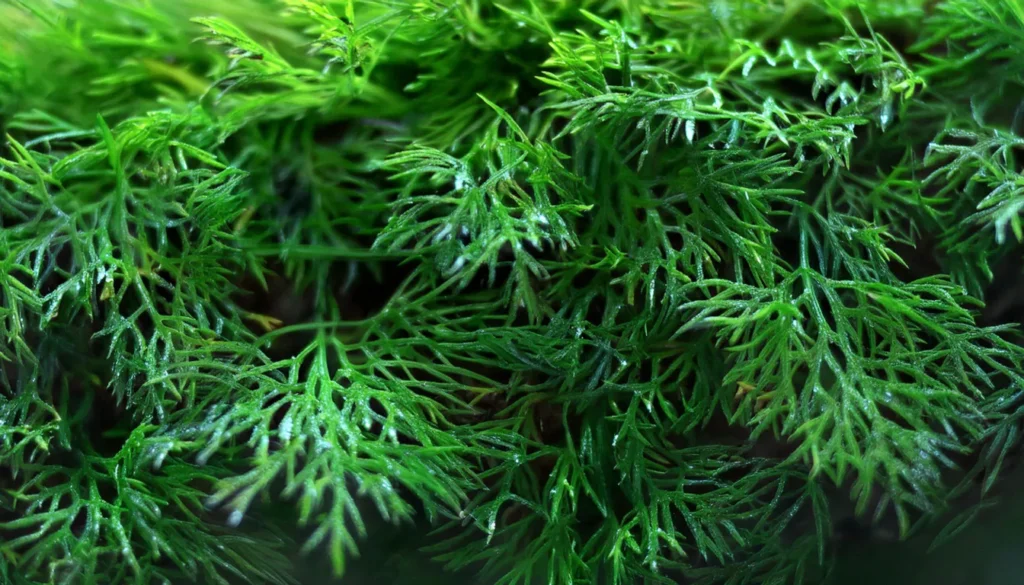
Temperature Parameter
For optimal growth, Riccia fluitans, also known as Crystalwort, thrives in temperatures ranging from 68°F to 82°F (20°C to 28°C). Maintaining water temperatures within this range promotes vigorous growth and helps prevent stress-related issues. Ensure stability in temperature to support the overall health and vitality of this aquatic moss.
Water Parameters
- Riccia Fluitans prefers a stable water environment with specific parameters. For optimal growth, maintain a temperature between 68°F and 82°F (20°C to 28°C).
- The pH level should be slightly acidic to neutral, ranging from 6.0 to 7.5. Keep the water hardness between 2 and 10 dKH and the conductivity between 100 and 500 µS/cm.
Substrate Requirement
- Substrate Independence: Riccia fluitans is a floating plant, meaning it doesn’t require substrate for growth. It obtains nutrients and gases directly from the water column, making it versatile in tank setups.
- Floating Habit: As a floating plant, Riccia fluitans can be left to float freely on the water’s surface. This is advantageous for aquarists who prefer minimalistic aquascapes or want to create a natural, open-water appearance.
- Anchoring Option: While not essential, some aquarists prefer to anchor Riccia fluitans to decorative elements such as driftwood or rocks. This can be done by using fishing line or a mesh material to tie down the plant.
- Creating Mats: Tying down Riccia fluitans allows it to form dense mats, which can provide hiding places for fry or small fish and create visually appealing textures in the aquarium.
- Stable Surfaces: When anchoring Riccia fluitans, ensure that the surfaces are stable to prevent the plant from floating away or being dislodged. Secure attachment promotes healthy growth and prevents the plant from being disturbed by water flow.
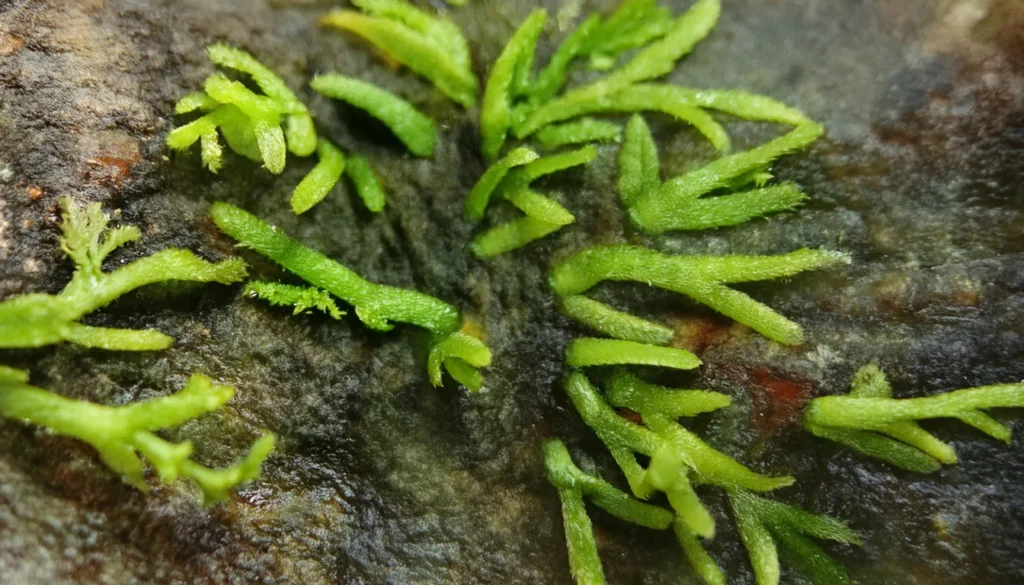
Placement Option
- Floating on the Water Surface: Riccia fluitans can be left to float freely on the water’s surface. This allows it to receive ample light and nutrients from the water column, promoting healthy growth. Floating Riccia creates a natural and dynamic look in the aquarium and provides shade for fish and other plants.
- Anchored to Hardscape: Alternatively, Riccia fluitans can be anchored to hardscape elements such as driftwood, rocks, or decorative structures. This can be achieved by tying down the plant using fishing line, cotton thread, or a mesh material. Anchoring allows Riccia to form dense mats or carpets over the substrate or hardscape, adding texture and visual interest to the aquarium.
- Incorporated into Aquascapes: Riccia fluitans can also be integrated into aquascapes in various ways. It can be used to create moss walls, foreground carpets, or accent features. Aquarists can experiment with different placement options to achieve their desired aesthetic effect, whether it’s a lush carpet or a floating island.
- Shaded Areas: Consider placing Riccia fluitans in areas of the aquarium that receive moderate to high light intensity. This ensures optimal photosynthesis while providing shaded areas for fish and other light-sensitive plants.
Recommended Tank Size
- Nano Tanks: Riccia Fluitans can thrive in nano tanks as small as 5 gallons (19 liters). These compact tanks provide sufficient space for growing Riccia carpets or floating mats, making them ideal for aquascapers with limited space or beginners looking to start a small planted aquarium.
- Medium-Sized Tanks: For aquarists with larger tanks, such as those ranging from 10 to 20 gallons (38 to 76 liters), Riccia Fluitans can be used as a foreground or midground plant to create lush carpets or accentuate hardscape features. These tanks offer more room for creativity and allow for greater flexibility in aquascape design.
- Large Tanks: In larger tanks exceeding 20 gallons (76 liters), Riccia Fluitans can be used as a versatile plant to fill empty spaces, create floating islands, or cover expansive areas of hardscape. With ample space, aquarists can experiment with different placement options and create stunning aquatic landscapes.
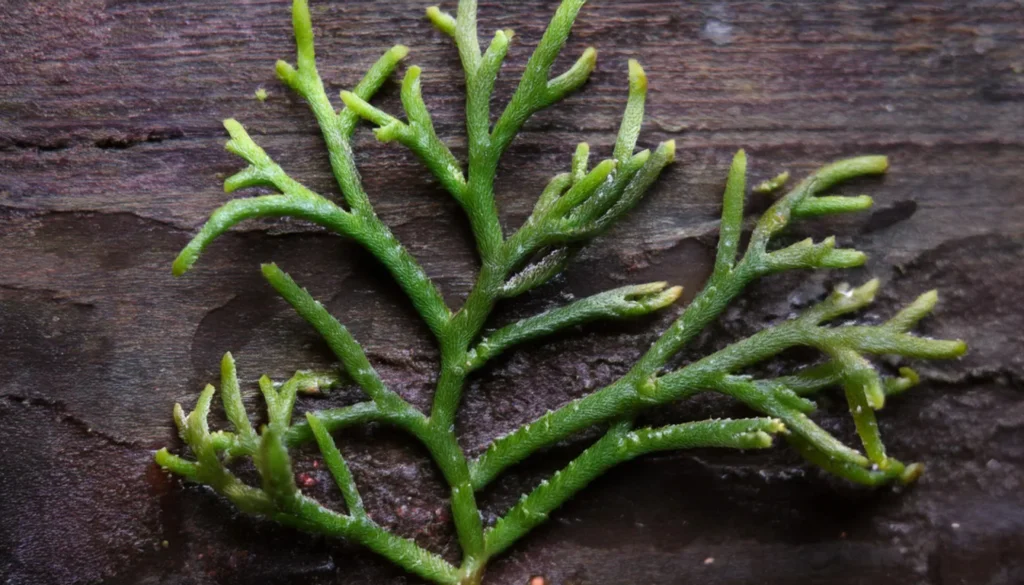
Nutrient Requirements
- Ensuring an adequate supply of nutrients is crucial for the health and growth of Riccia Fluitans. This plant benefits from a nutrient-rich substrate or the addition of aquatic plant fertilizers.
- Supplying essential macronutrients such as nitrogen, phosphorus, potassium, and micronutrients like iron will promote lush and vibrant growth. Regularly test the water parameters and adjust nutrient dosage as necessary to maintain a healthy balance.
Riccia Fluitans Cultivation Tips
- CO2 Injection: Carbon dioxide (CO2) supplementation is beneficial for promoting healthy growth and vibrant coloration in Riccia Fluitans. Consider using a CO2 injection system to maintain optimal CO2 levels in the water. Alternatively, liquid carbon supplements can also be used as a CO2 source.
- Nutrient Supplementation: Riccia Fluitans benefits from regular fertilization to ensure adequate nutrient availability. Use a comprehensive liquid fertilizer or root tabs to provide essential nutrients such as nitrogen, phosphorus, potassium, and micronutrients. Follow the manufacturer’s instructions for dosing.
- Substrate: While Riccia Fluitans can be grown floating or attached to surfaces, providing a nutrient-rich substrate can enhance its growth. Choose a fine-grained substrate such as aquasoil or nutrient-rich planting substrate to anchor Riccia securely if growing it as a carpet.
- Water Parameters: Maintain stable water parameters conducive to plant growth. Riccia Fluitans thrives in slightly acidic to neutral water with a pH range of 6.0 to 7.5. Keep the water temperature between 68°F to 82°F (20°C to 28°C) for optimal growth.
- Pruning: Regular pruning helps prevent Riccia Fluitans from overgrowing and shading out other plants. Trim excess growth using sharp scissors or aquascaping tools as needed to maintain the desired shape and prevent it from spreading uncontrollably.
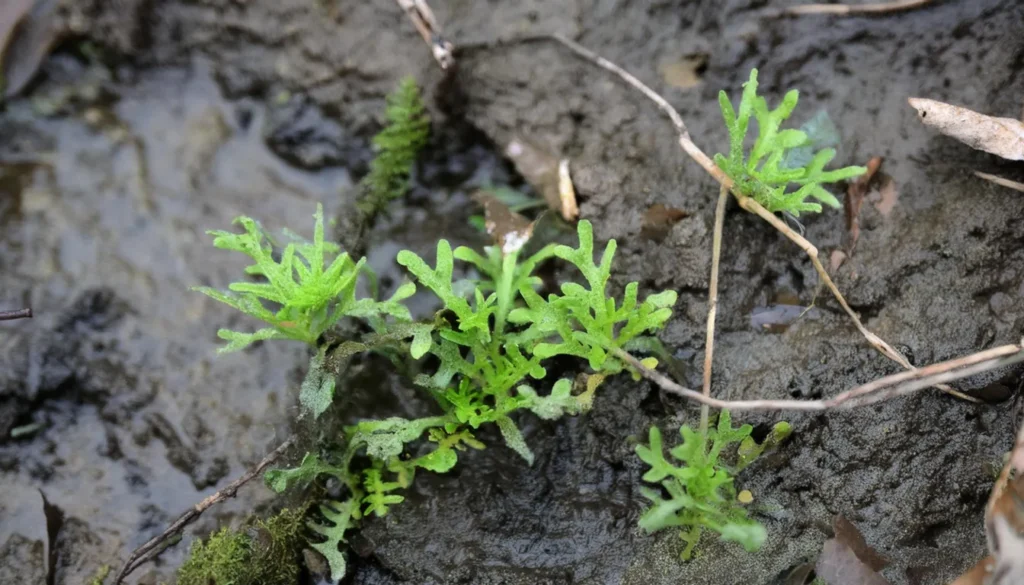
Plant Propagation Tips
- Splitting: Riccia Fluitans naturally forms dense mats or clusters, making it easy to divide and propagate. Simply separate a portion of the mat or cluster using your fingers or aquascaping tools and replant it in another area of the tank. This method works well for both floating and attached Riccia.
- Attaching: If Riccia Fluitans is floating in your aquarium, you can easily attach it to surfaces such as rocks, driftwood, or mesh pads for a more controlled growth pattern. Use fishing line or thread to secure small portions of Riccia to the desired surface. Over time, the plant will attach itself and spread across the surface.
- Mesh Pads: Another effective propagation method involves sandwiching Riccia Fluitans between two pieces of mesh or plastic grid. Place the Riccia between the layers of mesh and secure them together with weights or clips. As the Riccia grows, it will penetrate the mesh and form a dense carpet. This method is ideal for creating a Riccia carpet in the foreground of your aquarium.
- Trimming and Replanting: Regular pruning of Riccia Fluitans helps promote bushier growth and prevents it from becoming too dense. Trim the plant using sharp scissors or aquascaping tools, removing excess growth as needed. Replant the trimmed portions to encourage new growth in other areas of the tank.
Contributions To Biodiversity And Habitat Restoration Efforts
- In addition to its role as a bioindicator species, Riccia Fluitans also contributes significantly to biodiversity and habitat restoration efforts.
- The presence of this plant in aquatic habitats encourages the growth and colonization of diverse microorganisms, algae, and invertebrates.
- This, in turn, attracts higher trophic levels, including fish and other aquatic animals, resulting in improved biodiversity and ecosystem resilience.
- Furthermore, Riccia Fluitans plays a vital role in habitat restoration projects. Its ability to grow rapidly and colonize different substrates makes it an ideal candidate for reestablishing disturbed and degraded aquatic habitats.
- By planting Riccia Fluitans in areas that have suffered from pollution or habitat loss, researchers and conservationists can accelerate the recovery process and enhance the overall health and stability of the ecosystem.
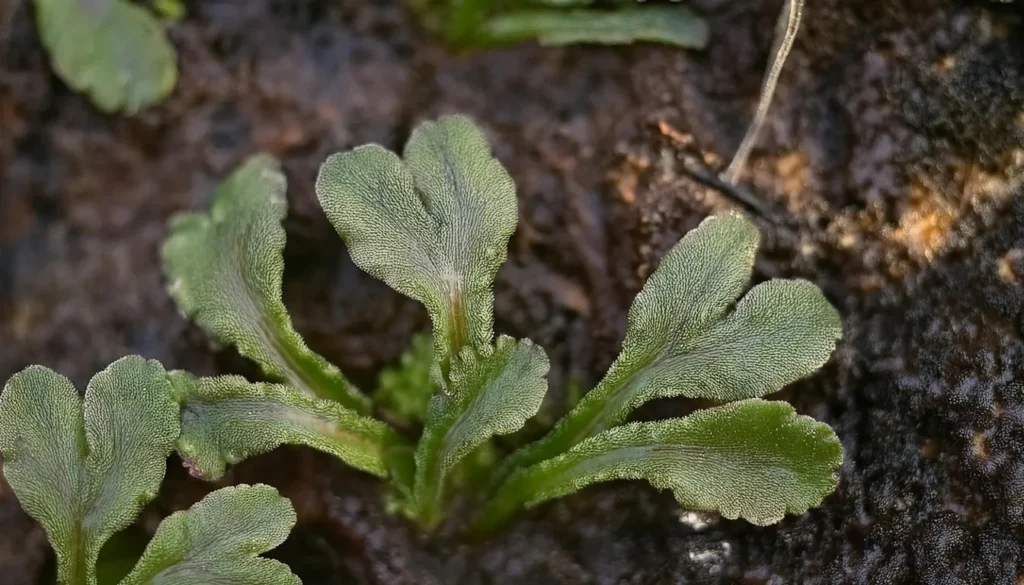
Conclusion
It is a fascinating floating moss that holds immense wonder and potential. Throughout this article, we have explored this aquatic plant’s unique characteristics and adaptations, delved into its history and origin, and discussed its distinct taxonomy and morphology.
Scientific research and observations have revealed the important role that this plant plays in water quality management and its potential as a bioindicator species. Additionally, ongoing research is being conducted to unlock the medicinal benefits that this floating moss may offer.
For those interested in keeping it, it is essential to understand its care requirements. Proper lighting, appropriate water parameters, and fulfilling the nutrient requirements are crucial for its successful growth.
Looking ahead, It possesses promising prospects in environmental monitoring, contributing to biodiversity conservation and habitat restoration efforts. Its ability to propagate through various techniques and its characteristic growth patterns make it an ideal addition to aquariums and aquatic habitats.
Frequently Asked Questions
How Does Riccia Fluitans Contribute To Water Quality Management?
This plant plays a crucial role in water quality management. It absorbs excess nutrients, such as nitrates and phosphates, from the water, helping prevent the growth of harmful algae and maintaining a healthy aquatic ecosystem.
Is There Any Current Research On The Medicinal Potential Of Riccia Fluitans?
There is ongoing research to explore the pharmaceutical benefits of it. Preliminary studies suggest that certain compounds found in this plant may have anti-inflammatory and antioxidant properties. However, further research is needed to understand its medicinal potential fully.
What Are The Care Requirements For Riccia Fluitans?
This requires moderate to bright lighting to thrive. It prefers slightly acidic to neutral water with optimal temperature ranges between 68°F and 82°F (20°C and 28°C). Additionally, regular supplementation of nutrients, particularly carbon dioxide and micronutrients, is recommended for healthy growth.
Can Riccia Fluitans Be Used For Environmental Monitoring?
Yes, It shows promise as a bioindicator species for environmental monitoring. It is sensitive to changes in water quality, making it useful in assessing the health of aquatic ecosystems. Furthermore, its ability to remove excess nutrients from the water contributes to improving water quality and supports biodiversity and habitat restoration efforts.
How Can Riccia Fluitans Be Propagated To Increase The Growth?
It can be propagated by separating mature portions of the plant and attaching them to a substrate or floating it on the water’s surface. It can also reproduce through spores. As for growth patterns, It has a rapid growth rate, especially under favorable conditions, and can quickly cover the water surface.
- Unveiling The Wonders Of Riccia Fluitans In Aquascapes - August 7, 2024
- Vallisneria Gigantea Var. Guide To Care And Cultivation At Home - July 31, 2024
- Vesicularia Dubyana Care & Growth Guide Tips For Beginner Gardeners - July 30, 2024
